Introduction
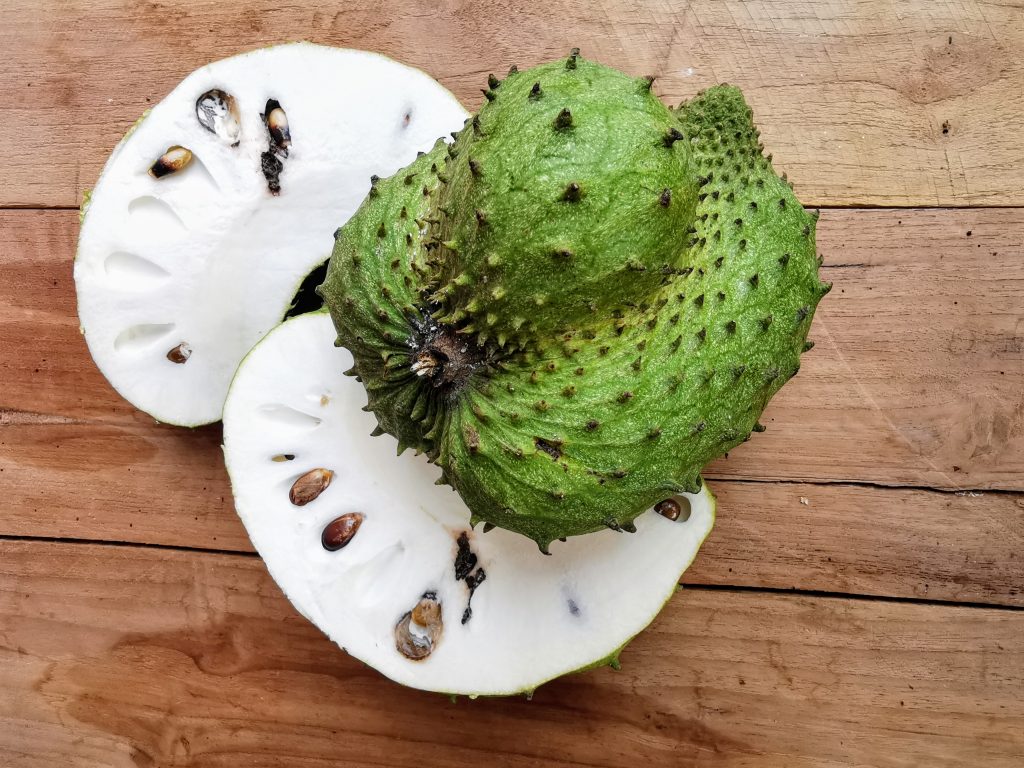
Soursop and custard apple are two tropical fruits that are often compared due to their similarities in appearance and taste. While both fruits belong to the Annona family, they have their own unique flavors, textures, and nutritional profiles. This article aims to explore the characteristics of soursop and custard apple, highlighting their taste, texture, and health benefits. By understanding the differences between these fruits, readers can make an informed decision when choosing which one to incorporate into their diet. Additionally, we will provide some recipe ideas to inspire culinary creations using these delicious tropical fruits.
Overview Of Soursop And Custard Apple
Soursop and custard apple are both tropical fruits that belong to the Annona family. Soursop, also known as graviola, is characterized by its large size, green spiky skin, and white soft flesh. It has a sweet and tangy flavor, similar to a combination of pineapple and strawberry. On the other hand, custard apple, also known as cherimoya, has a more round shape with a bumpy green skin. Its flesh is creamy and sweet, with a flavor reminiscent of tropical fruits like banana and mango. Both fruits are highly nutritious and offer a range of health benefits.
Importance Of Tropical Fruits In The Diet
Tropical fruits play a crucial role in a well-balanced diet due to their rich nutrient content. They are abundant in vitamins, minerals, and antioxidants that are essential for maintaining good health. Tropical fruits like soursop and custard apple offer numerous health benefits, such as boosting the immune system, improving digestion, and reducing the risk of chronic diseases. These fruits are also low in calories and high in fiber, making them an excellent choice for weight management. Incorporating tropical fruits into your diet can add variety and nutritional value to your meals, ensuring optimal health and well-being.
Soursop: Taste, Texture, And Nutritional Value
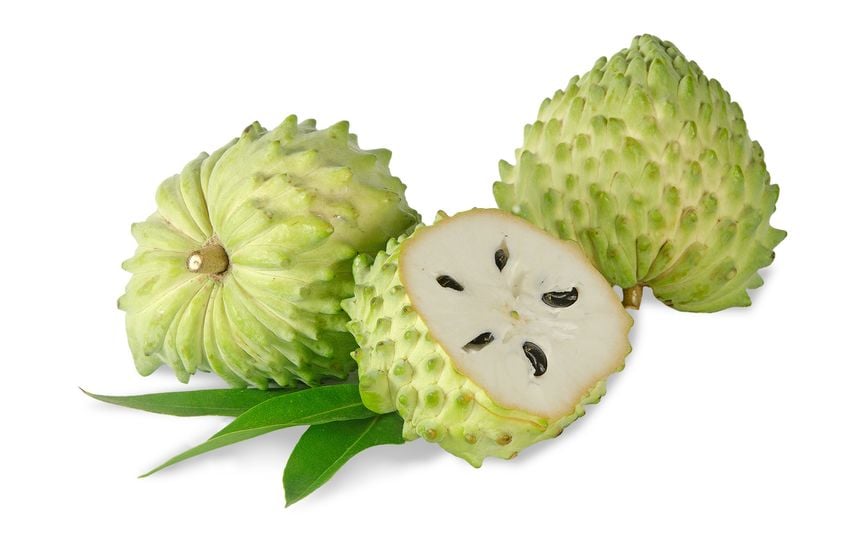
Soursop is a tropical fruit with a unique taste and texture. It has a sweet and tangy flavor, often described as a combination of pineapple, strawberry, and citrus. The fruit has a creamy and fibrous texture, similar to a custard.
In terms of nutritional value, soursop is packed with essential vitamins and minerals. It is rich in vitamin C, providing a boost to the immune system. It also contains antioxidants that help protect against cell damage and reduce the risk of chronic diseases. Soursop is low in calories and high in fiber, making it a great choice for weight management and improving digestion.
Soursop Flavor Profile
Soursop has a unique and enticing flavor profile that sets it apart from other tropical fruits. With its sweet and tangy taste, soursop is often described as a blend of pineapple, strawberry, and citrus. The combination of these flavors creates a refreshing and tropical experience for the taste buds. The creamy texture of the fruit adds another layer of delight, making soursop a truly indulgent treat. Whether enjoyed fresh, in smoothies, or as an ingredient in desserts, soursop’s distinct flavor is sure to satisfy fruit lovers looking for something new and exotic.
Health Benefits Of Soursop
Soursop is not only delicious but also packed with numerous health benefits. It is rich in antioxidants, which help fight against free radicals and protect the body against cellular damage. Soursop also contains vitamins C and E, which boost the immune system and promote healthy skin. This tropical fruit is known for its anti-inflammatory properties, which can help reduce pain and inflammation. Additionally, soursop may have anti-cancer properties and is commonly used in traditional medicine to treat various ailments. Incorporating soursop into your diet can contribute to overall health and well-being.
Custard Apple: Taste, Texture, And Nutritional Value
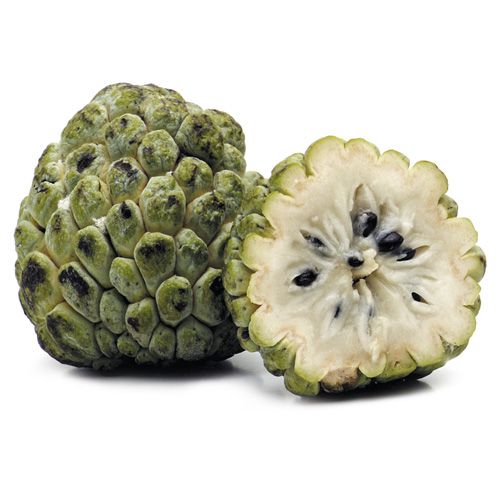
Custard apple, also known as sugar apple, is a tropical fruit with a unique taste and texture. It has a creamy, custard-like flesh that is sweet and fragrant, making it a delight to eat. The texture of custard apple is smooth and soft, with small seeds scattered throughout.
In terms of nutritional value, custard apple is a good source of vitamins and minerals. It is rich in vitamin C, which boosts the immune system and promotes healthy skin. Custard apple also contains potassium, which helps maintain proper heart function. Additionally, it is low in calories and fat, making it a healthy choice for those watching their weight.
Overall, custard apple is a delicious and nutritious fruit that can be enjoyed on its own or used in various culinary preparations. Its unique taste and texture make it a popular choice among fruit lovers.
Custard Apple Flavor Profile
Custard apple, also known as sugar apple, offers a delightful flavor profile that is loved by many. Its creamy, custard-like flesh has a uniquely sweet and fragrant taste. The flavor is often described as a blend of tropical fruits like pineapple, banana, and papaya, with notes of vanilla and pear. Each bite of custard apple is a burst of sweetness, making it a satisfying treat on its own or as an ingredient in various recipes. The rich, luscious flavor of custard apple is a true delight for fruit enthusiasts.
Health Benefits Of Custard Apple
Custard apple not only delights the taste buds but also offers numerous health benefits. Rich in antioxidants, custard apple can help boost the immune system and protect the body against cellular damage caused by free radicals. It is also a good source of vitamin C, which supports collagen production and maintains healthy skin. Furthermore, custard apple is packed with fiber, which aids digestion and keeps the digestive system healthy. Additionally, it contains potassium, which helps regulate blood pressure, and magnesium, which promotes bone health. Including custard apple in your diet can contribute to overall well-being and a healthy lifestyle.
Comparison Of Soursop And Custard Apple
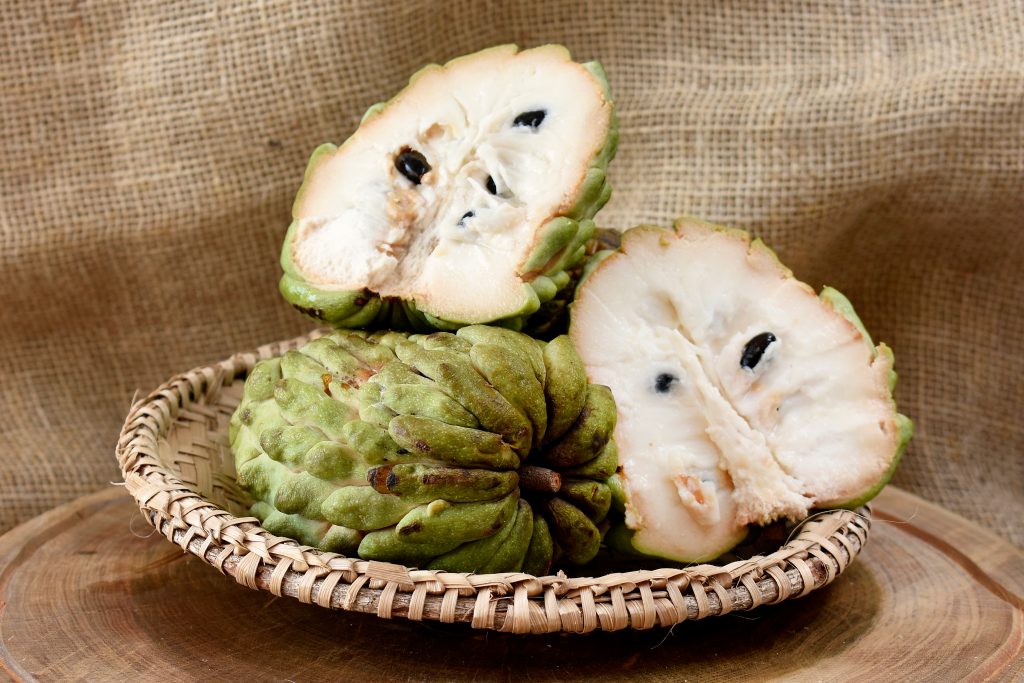
Soursop and custard apple may appear similar in appearance and taste, but there are some key differences between the two tropical fruits. Soursop has a white flesh and creamy texture, while the flesh of custard apple can vary between white and red, depending on the cultivar. In terms of nutritional value, both fruits offer various health benefits. Soursop is known for its high vitamin C content, while custard apple is rich in antioxidants and fiber. When choosing between the two, consider your preferences in taste and texture, as well as the specific health benefits you are seeking.
Differences In Appearance And Texture
When comparing soursop and custard apple, there are noticeable differences in their appearance and texture. Soursop has a white flesh and a creamy, smooth texture, giving it a velvety mouthfeel. On the other hand, custard apple can have a white or red flesh, depending on the cultivar. The texture of custard apple is often described as grainy and fibrous, with a soft, melting quality. These variations in appearance and texture contribute to the unique sensory experience of each fruit.
Nutritional Comparison
When comparing the nutritional composition of soursop and custard apple, there are some differences to note. Soursop is known for its high vitamin C content, providing about 34% of the recommended daily intake per serving. It is also a good source of dietary fiber, potassium, and several B vitamins. On the other hand, custard apple is rich in dietary fiber, vitamin C, and vitamin A. It also contains minerals like potassium and magnesium. Both fruits offer a range of antioxidants that can support overall health and well-being.
Culinary Uses And Recipes
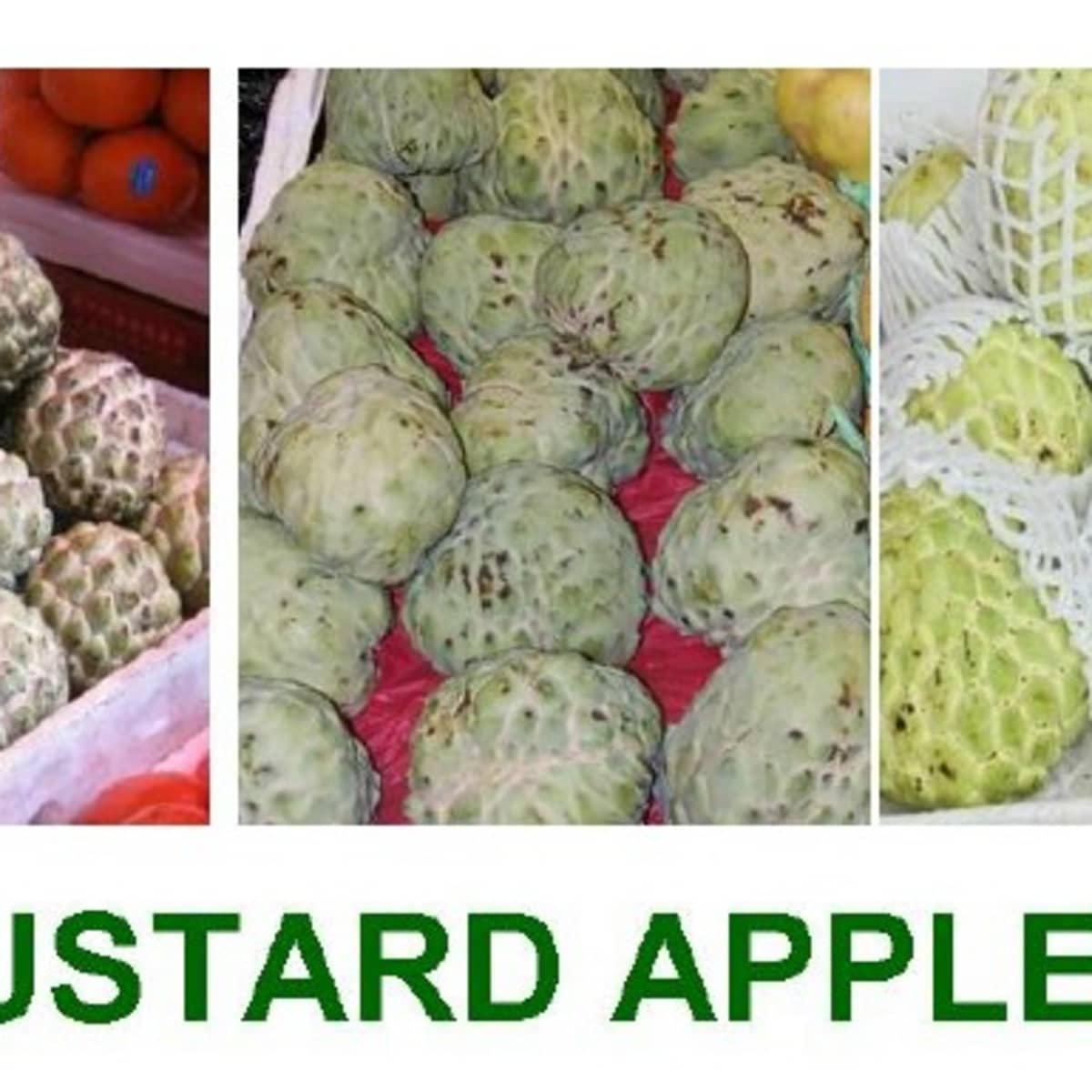
Soursop and custard apple are versatile fruits that can be used in a variety of culinary applications.
For soursop, the fruit is commonly used to make refreshing smoothies, juices, and ice creams. The creamy texture and tangy flavor of soursop also make it a great addition to desserts such as pies, cakes, and custards.
Custard apple, on the other hand, can be enjoyed by itself or added to fruit salads for a sweet and creamy twist. It can also be used to make jams and jellies, or even blended into milkshakes for a unique tropical flavor.
Overall, soursop and custard apple offer endless possibilities in the kitchen, allowing you to explore and create delicious and healthy dishes. Now you can enjoy these tropical fruits in a variety of ways and truly savor their unique flavors!
Soursop Recipes And Culinary Applications
Soursop is a versatile fruit that lends itself well to a variety of culinary applications. Its creamy texture and tangy flavor make it a popular choice for smoothies and juices. You can also use soursop to make refreshing ice creams or sorbets. For a unique twist, try incorporating soursop into your desserts like pies, cakes, and custards. Soursop can also be used in savory dishes, such as salsa or salad dressings, to add a tropical touch. With its versatility and unique flavor, soursop is sure to elevate any dish it is added to.
Custard Apple Recipes And Culinary Applications
Custard apple is a versatile fruit that can be used in various culinary applications. Here are some delicious recipes and ideas to incorporate custard apple into your dishes:
- Custard Apple Smoothie: Blend ripe custard apple with milk or yogurt for a creamy and refreshing smoothie.
- Custard Apple Ice Cream: Use custard apple puree as a base for homemade ice cream. Add some crushed cookies or chocolate chips for extra texture.
- Custard Apple Salad: Combine sliced custard apple with mixed greens, cherry tomatoes, and a light dressing for a refreshing and healthy salad.
- Custard Apple Chutney: Make a tangy chutney by cooking custard apple with spices like ginger, garlic, and chili. Enjoy it with grilled meats or as a dip for snacks.
- Custard Apple Custard: Whip up a creamy custard using custard apple puree, milk, eggs, and sugar. Serve it chilled for a delightful dessert.
These recipes showcase the unique flavor and texture of custard apple, adding a tropical twist to your meals. Enjoy the versatility of this delicious fruit in your culinary creations!
Conclusion
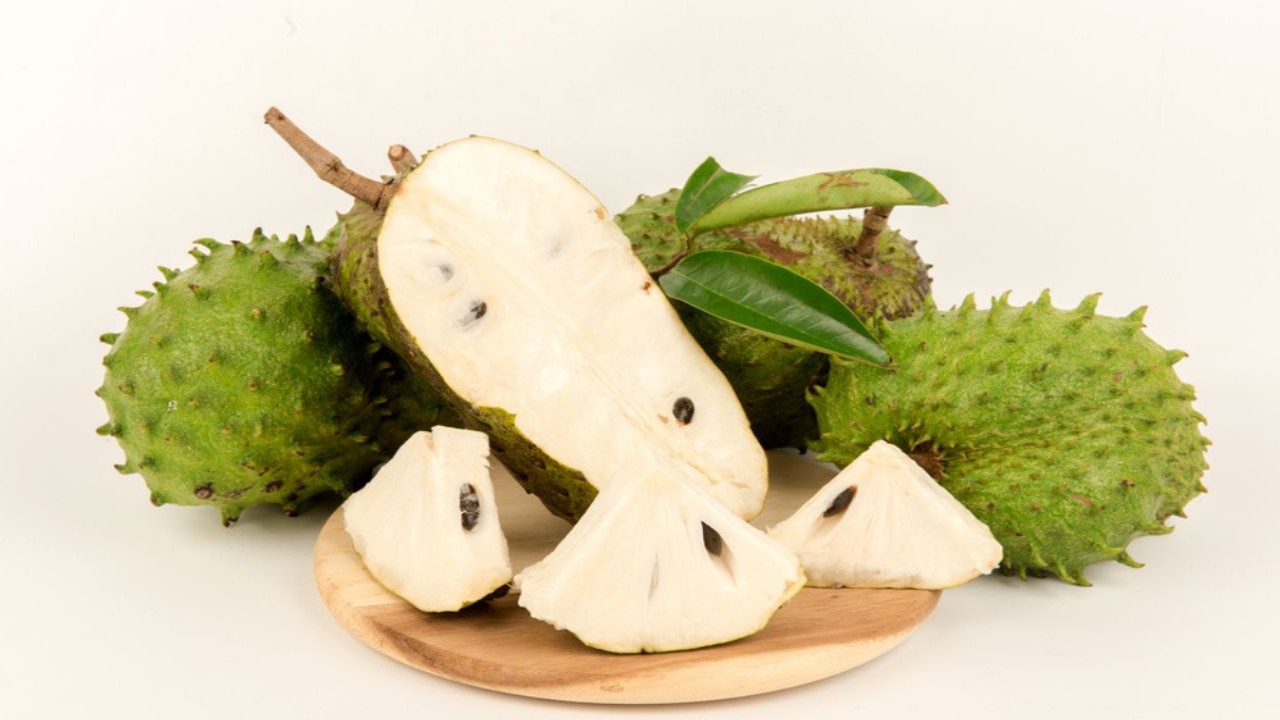
In conclusion, soursop and custard apple are two distinct tropical fruits that offer unique flavors and nutritional benefits. While soursop has a tart and tangy taste, custard apple is known for its sweet and creamy texture. Both fruits are rich in vitamins, minerals, and antioxidants, making them valuable additions to a healthy diet. Whether you prefer the refreshing taste of soursop or the lusciousness of custard apple, incorporating these fruits into your culinary creations will add variety and nutrition to your meals. So why not give soursop and custard apple a try and experience the tropical goodness they have to offer?
Factors To Consider When Choosing Between Soursop And Custard Apple
When deciding between soursop and custard apple, there are a few factors to consider. Firstly, consider your taste preferences. Soursop has a tart and tangy flavor, while custard apple is known for its sweet and creamy taste. Additionally, consider the texture you prefer. Soursop has a soft and fibrous texture, while custard apple is smooth and creamy. Another factor to consider is availability. Soursop is more widely available in tropical regions, while custard apple may be more accessible in certain areas. Lastly, consider the nutritional benefits each fruit offers and how they align with your dietary needs and goals.
Exploring Other Tropical Fruit Varieties
When it comes to tropical fruits, soursop and custard apple are just the tip of the iceberg. There is a wide array of other tropical fruits waiting to be explored. Some popular options include mango, papaya, pineapple, dragon fruit, lychee, and passion fruit. Each of these fruits boasts its own unique flavor, texture, and nutritional profile. Mangoes are known for their sweet and juicy taste, while dragon fruit offers a refreshing and subtly sweet flavor. Papaya is deliciously ripe and tropical, while lychee provides a delicate and floral taste. Whether enjoyed on their own or incorporated into various recipes, exploring these tropical fruit varieties can add a burst of tropical goodness to your meals and snacks. So why not venture beyond soursop and custard apple and discover the mouthwatering world of tropical fruits?
FAQ: Soursop vs Custard Apple
Q: What are soursop and custard apple?
A: Soursop and custard apple are two tropical fruits that belong to the Annonaceae family. They are known for their unique flavors and nutritional benefits.
Q: What is the difference between soursop and custard apple?
A: While both fruits are similar in appearance and come from the same family, there are differences in taste, texture, and physical characteristics. Soursop has a tangy and acidic flavor, while custard apple has a sweet and creamy taste. Soursop has a spiky green skin, while custard apple has a bumpy and greenish-yellow skin.
Q: Can you describe the texture of soursop and custard apple?
A: Soursop has a fibrous texture with a soft and pulpy interior that contains large black seeds. On the other hand, custard apple has a creamy and custard-like texture with small black seeds embedded within the flesh.
Q: Are there any nutritional differences between soursop and custard apple?
A: Both fruits are rich in nutrients, including vitamins, minerals, and dietary fiber. However, soursop is generally considered to be more nutritionally dense than custard apple. Soursop is notably high in vitamin C and several B vitamins, while custard apple is a good source of vitamin A and potassium.
Q: Are there any health benefits associated with consuming soursop and custard apple?
A: Yes, both fruits offer various health benefits. Soursop is known for its anti-inflammatory properties and potential anti-cancer effects, while custard apple is praised for its antioxidant content and its ability to boost immune function.
Q: How can soursop and custard apple be incorporated into the diet?
A: Soursop and custard apple can be enjoyed in a variety of ways. They can be eaten fresh, blended into smoothies, added to fruit salads, used as toppings for desserts, or juiced to make healthy beverages.
Q: Are soursop and custard apple readily available?
A: Availability may vary depending on your location. Both fruits are more commonly found in tropical regions where they are grown. However, they may also be available in some specialty grocery stores or fruit markets in other regions.
Q: Are there any precautions to be aware of when consuming soursop or custard apple?
A: It is important to note that soursop seeds and leaves contain a toxin called annonacin, which can be harmful if consumed in large quantities. Therefore, it is advisable to remove the seeds and use only the flesh of the fruit. Pregnant women should also consult their healthcare provider before consuming either fruit.
Overall, soursop and custard apple are two delicious tropical fruits with unique flavors and nutritional profiles. Incorporating them into your diet can provide a refreshing and healthy addition to your meals or snacks.

From At-Home Dinner Parties to Family Reunions to Office Parties, we can cater your next Event!